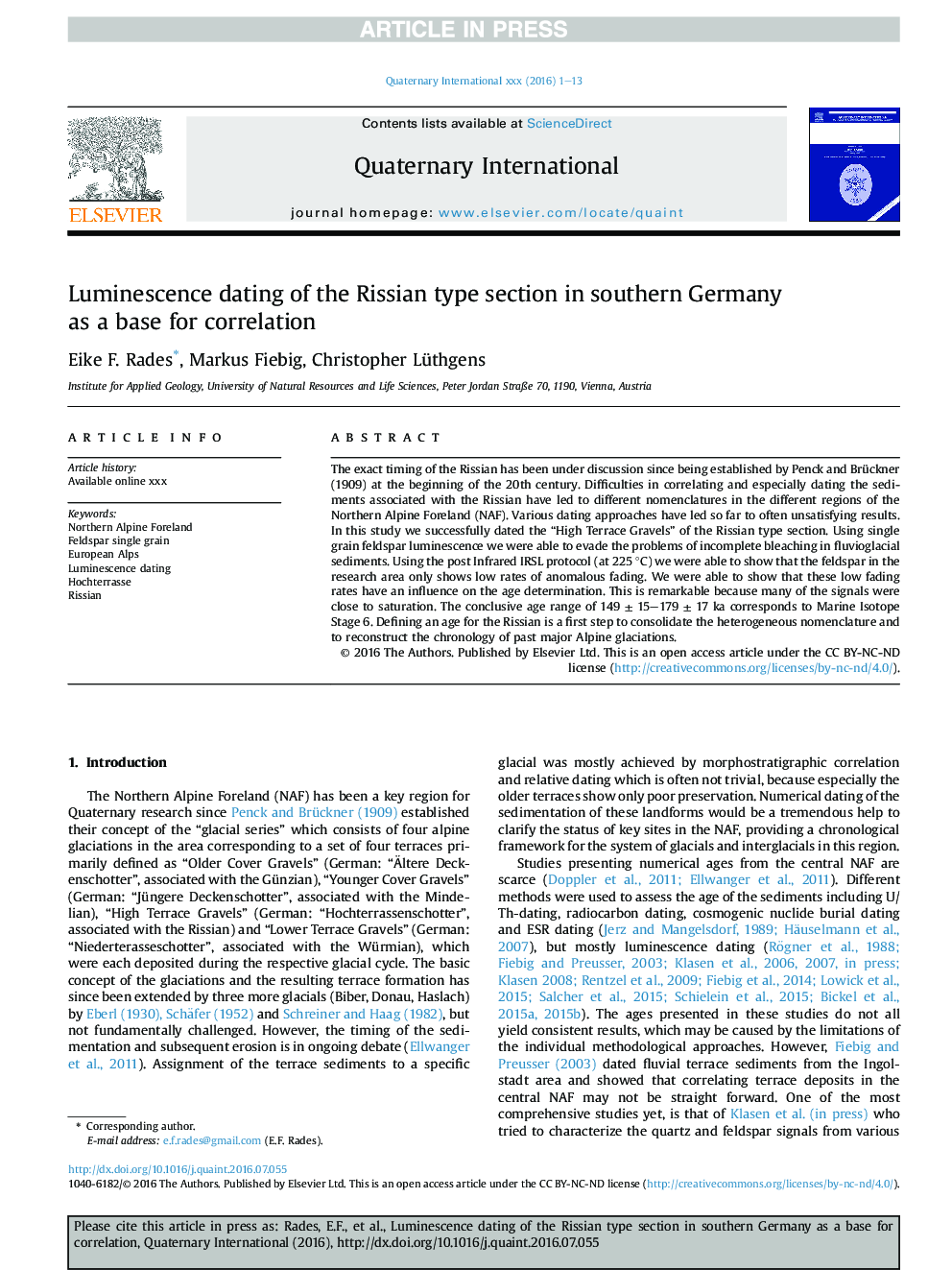| Article ID | Journal | Published Year | Pages | File Type |
|---|---|---|---|---|
| 7449461 | Quaternary International | 2018 | 13 Pages |
Abstract
The exact timing of the Rissian has been under discussion since being established by Penck and Brückner (1909) at the beginning of the 20th century. Difficulties in correlating and especially dating the sediments associated with the Rissian have led to different nomenclatures in the different regions of the Northern Alpine Foreland (NAF). Various dating approaches have led so far to often unsatisfying results. In this study we successfully dated the “High Terrace Gravels” of the Rissian type section. Using single grain feldspar luminescence we were able to evade the problems of incomplete bleaching in fluvioglacial sediments. Using the post Infrared IRSL protocol (at 225 °C) we were able to show that the feldspar in the research area only shows low rates of anomalous fading. We were able to show that these low fading rates have an influence on the age determination. This is remarkable because many of the signals were close to saturation. The conclusive age range of 149 ± 15-179 ± 17 ka corresponds to Marine Isotope Stage 6. Defining an age for the Rissian is a first step to consolidate the heterogeneous nomenclature and to reconstruct the chronology of past major Alpine glaciations.
Keywords
Related Topics
Physical Sciences and Engineering
Earth and Planetary Sciences
Geology
Authors
Eike F. Rades, Markus Fiebig, Christopher Lüthgens,
